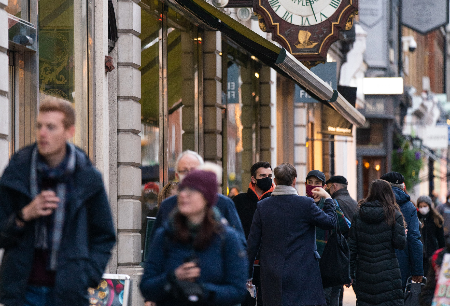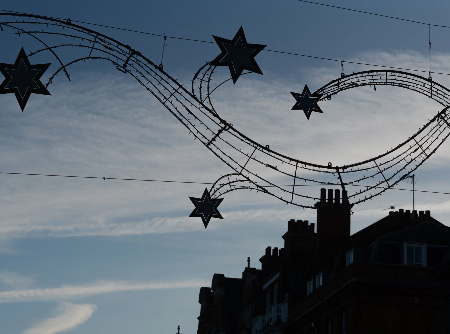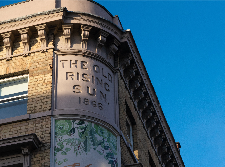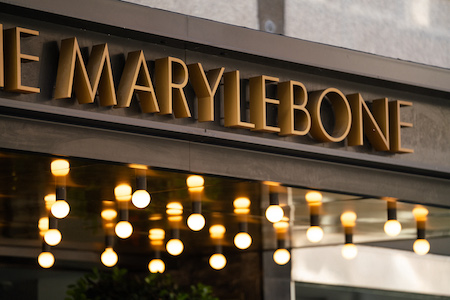Each month, we spend five minutes with one of the impressive professionals that call Harley Street home.
This month it's over to our new team member and Public Realm manager, Nigel Thorne.
Can you tell us a little bit about your work at The Harley Street?
I began the role of Public Realm and Place-making manager for the Harley Street BID only 1 week ago. Since then, it has been whirlwind of settling myself into the role and catching-up on everything that has happened to date. As I begin to better understand the make-up of the team and their individual roles, I am also being introduced to the various steering and working groups that go to make up the wide array of stakeholders that have a core interest in the Harley Street Area Partnership.
I see my role as being pivotal in the development and implementation of the widest array of sustainable credentials for the BID area, helping create an inclusive environment that will be an exemplar for the entire community of businesses, residents, visitors, and all who have an engagement in the area.
It is also essential that the BID area collaborates and cooperates with other similar operations across the capital to ensure we achieve a range of comprehensive improvements in this most amazing metropolis.
Describe your average day.
Although my engagement with the project is new, I am experienced enough to know that this position will never present with just an ‘average day’; an exciting and challenging aspect of the role that first attracted my attention.
To achieve the best outcomes for the area, I believe that, collaborating with the team, it is important that we fully understand the area in which we are working. We need to better understand the needs of those living, working, and visiting the area and what needs to happen to help shape and improve the environment for everyone. This involves visiting and walking the area regularly, and at contrasting times of the day, to understand the interactions between people with diverse needs, wants, and desires. This helps to better understand traffic movements, pedestrian safety, business use, and the interactions of all these factors and more.
There is so much variety and difference in the BID area that managing expectations and potential will be at the core of everything I do, especially when engaging with the numerous stakeholder groups and members. Of course, there are always the necessary administrative tasks to be carried out, but these will always be more interesting because of the characteristics of the role.
How did you get to where you are today?
Horticulture, landscape, and the environment have been part of my DNA since I was a small child following in my father’s footsteps. I became a Chartered Landscape Architect, specialising in project and landscape management, after my university studies and have worked in various capacities across the globe. I have been privileged to lead my profession both nationally and internationally, observing the increasing recognition given to the importance of how we as human beings interact with our ever-diminishing resources of the planet.
My profession, training, education, and practice has always focussed on how best to improve our landscape and environment, learning from the past, investing in our here and now, and acknowledging that we are only borrowing this planet from our future generations.
How has Covid-19 impacted your organisation?
The BID was set up during and in the immediate aftermath of the worse of the Covid-19 impacted lockdowns. It is from this unprecedented experience that we have become more adept at being flexible in our approaches to the working day.
The financial and economic challenges that have emanated from the pandemic, as well as other significant global influences, has meant that everyone is now looking for more tangible short, medium, and longer term, sustainable returns on their investments. If money is to be invested, then it needs to be done so with greater consideration and forethought than ever before.
The global challenges of climate change, sustainability, and health and well-being need to be at the forefront of our thinking to ensure that whatever we choose to invest in, the future can be a dynamic, thriving opportunity for all.
What do you like most about being based on Harley Street?
I was fortunate enough to study at Bedford College, London University in the heart of The Regent’s Park when I first came to live in London. I had a shared student flat in Devonshire Place for a peppercorn rent and immediately fell in love with the entire area.
Apart from a few years overseas, I have lived in London ever since, but the area in and around Harley Street has always held a ‘magical’ attraction for me. The architecture, the vibrancy, but above all, the feeling of somehow ‘belonging’ has been with me throughout my extensive career, no matter where I have been in the world.
What are your thoughts on the future of the Harley Street Area?
The potential for the BID area (and beyond assuming appropriate collaboration and cooperation with the wider BID environment) is immense. Getting to understand the area is vitally important – not just at various times of the day but equally, different days of the week.
Inevitably, the area will mean many different things to many different people and capturing these demands, wishes, and desires will be one of the greatest challenges. Thereafter, managing the expectations of everyone involved will be an even greater struggle; but an enjoyable one.
There is an immense amount of support for the success of the BID and ensuring we fulfil the most appropriate and positive outcomes at a variety of different scales and interventions is imperative.
How could a visitor to the area spend their time here?
As already mentioned, there is a richness and a vibrancy to the area, right in the heart of the city’s west end, that makes it such a magical space to work or live in as well as to visit. General advice to mostly everyone? Stop looking at your feet and the pavement and just take some time to look up and around (be wary of the traffic and other pedestrians!).
Everywhere one looks there is quite an incredible array of outstanding architecture – there are over two hundred listed buildings within the BID area alone. Look closely and one can discover intricate and intimate details of stonework and architectural excellence that need time to be appreciated and enjoyed. Beyond this, there is the quite unique offer presented in and around Marylebone High Street, with boutique outlets of a wide range of high-quality opportunities.
Any particular recommendations or hidden gems?
There are many hidden gems across the BID area, from the slightly secretive, tucked-away spaces of the numerous mews properties and cobblestone surfaces to individual architectural gems that need to be discovered by taking time to stop and search above the average eyeline. As someone with a focus on public parks and opens spaces, the recommendation would be the relatively serene and unspoilt park area in the northern section of Paddington Street Gardens. Here there is an offer of time to think and separate from the surrounding bustle, and the future for the entire site is something the BID team hope to help improve upon for future generations.
Any If you could describe the Harley Street area with 3 words, what would they be?
Potential for excellence.













